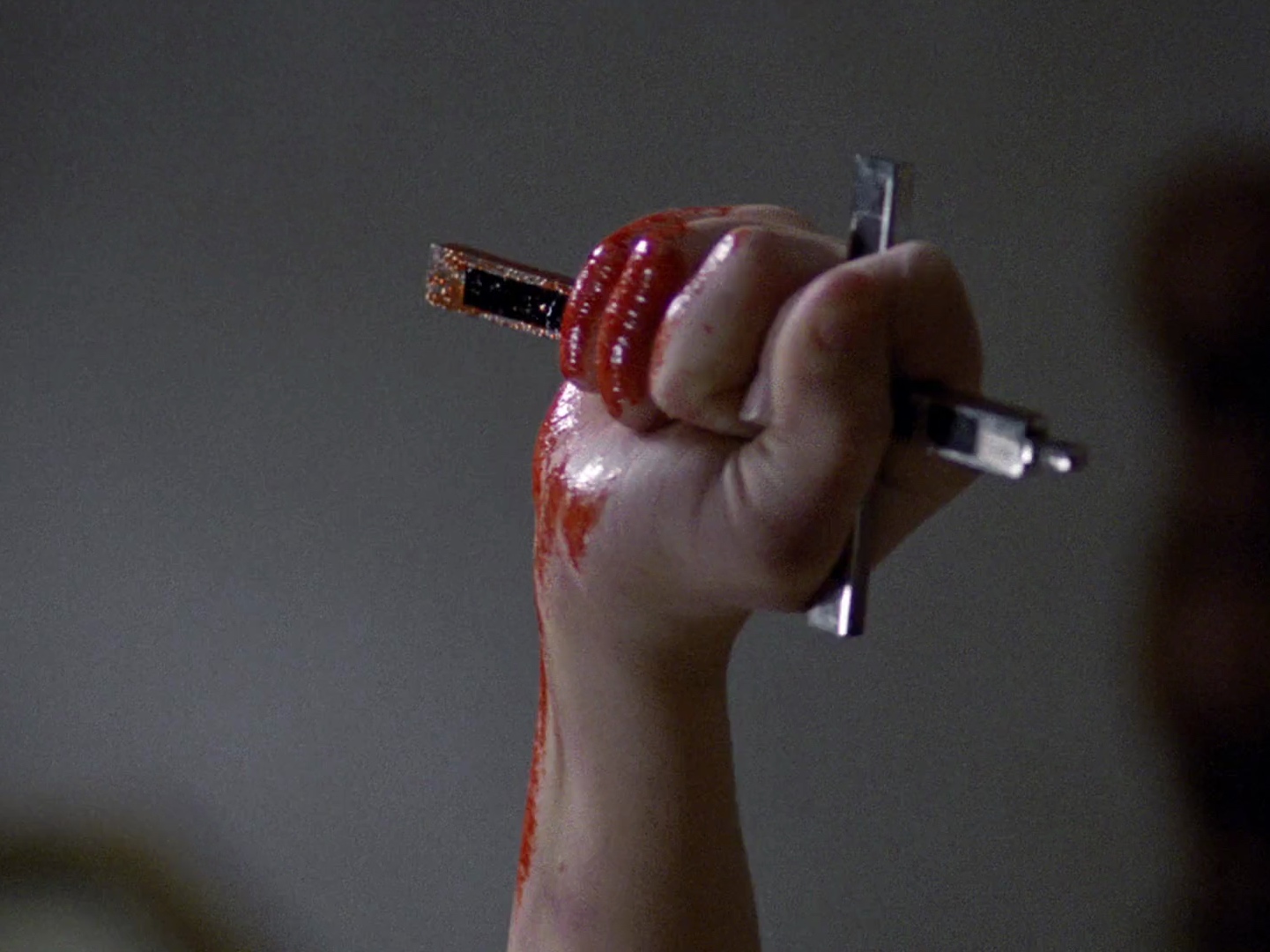
When a young girl is possessed by a mysterious entity, her mother seeks the help of two Catholic priests to save her life.
EN
“What an excellent day for an exorcism.”
Mercedes McCambridge as the demon
“Ideologically, the concern of all of these films (Alien, The Exorcist, The Deer Hunter, even Close Encounters of the Third Kind) is to make Americans even more American by having them exorcise an Other (evil, in general) that haunts or inhabits them. The novelty of these films, their power, too, is that they decided to no longer skimp on the means (technology, again) to demonstrate the other, the alien, within ourselves. Previously, it was mostly B movies that attacked this theme (in the fifties, around anti-communism), but with meager resources, limited to weak special effects or writerly manipulations (the Tourneurian off-screen) that only shocked viewers who were very naïve or very sophisticated (cinephiles). The decision to show the unshowable is fairly recent.”
Serge Daney1
“The week the film opened, a porno theater in Long Beach obtained a bootleg 16 mm. print. They too had lines around the block. There was a hand-printed sign outside the theater: ‘Technical difficulties, no refunds.’ In fact, the sound was out of sync with picture because the print had not only been illegally but amateurishly copied. This didn’t seem to bother the patrons. I heard about it from a friend, and I immediately reported it to Frank Wells. ‘We’ll get our lawyers on it right away,’ Frank said. Ten days went by, and the bootleg print was still playing. What angered me was not the loss of revenue; the film was earning a fortune. It was that people were not seeing it as I intended. I asked Wells what was happening with the lawyers, and he said they were preparing a complaint. Dave Salven and I had a friend who was on the wrong side of the law. He asked if I wanted him to ‘handle the situation,’ and I told him to go ahead. That Saturday night, Dave waited in the car with the engine running while our friend went into the Long Beach theater, past the crowds, and up to the projection booth. He told the projectionist to take the film off the projector, put it in its container, and hand it over. ‘Who the hell do you think you are?’ the projectionist responded. My ‘friend’ opened his jacket to reveal a .45 automatic, whereupon the projectionist complied, leaving an angry and confused audience.”
William Friedkin2
“This was – and remains today – an extraordinarily daring horror movie. Its agonising, slow-burn narrative structure is full of false leads, unsolved mysteries and events snatched away in medias res. Its sudden apparitions – such as the newly included 'spider walk' of Regan down the stairs – are terrifying as much for their abruptness as their lurid content. Friedkin likes to say that he deliberately presented only the bare bones of the story, leaving its interpretation to viewers. The claim seems disingenuous because Friedkin's method – announced here and taken to an extreme in his masterpiece, Cruising (1980) – is to swiftly sketch many, contradictory readings of the enigmatic events on screen, without settling on any of them. His is a cinema of hysteria – and in Regan he has a hysteric worthy of Freud’s case studies. (Like some of Freud’s women, she is confined to bed.) Blatty’s own understanding of his story is straightforwardly religious: it is about the struggle of Good against Evil, two primal forces that shape all cultures at all times (hence the film's mish-mash of modern and ancient, Christian and Pagan cultures).
[...]
However you choose to take it, the film is a blast. New digital effects – conjuring a subliminal death skull in every nook and cranny of this haunted house – heighten Friedkin's idea that the movie is a "collective hallucination" experienced by all its characters, a "symbiosis of dreams". Perhaps even more affecting is the technological enhancement of the soundtrack – one of the harshest and most disconcerting noisescapes in all cinema. Forget all the parodic jokes down the years about twisting heads and green vomit. The Exorcist is more startling and captivating now than ever before – and a shining example of how radical, on every level, a piece of popular entertainment can be.”
Adrian Martin3
- 1Serge Daney, “Apocalypse Now,” The MIT Press Reader, 1 September 2022. This essay was originally published in French in Cahiers du Cinéma, no. 304, October 1979.
- 2William Friedkin, The Friedkin Connection: A Memoir (New York: Harper, 2013).
- 3Adrian Martin, “The Exorcist: Director’s Cut,” Film Critic: Adrian Martin, March 2001.

